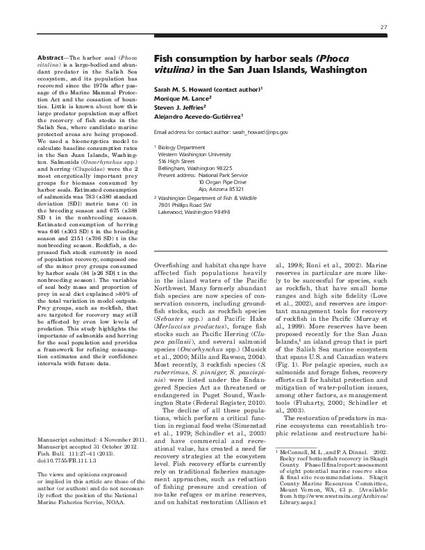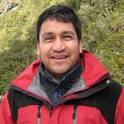
The harbor seal (Phoca vitulina) is a large-bodied and abundant predator in the Salish Sea ecosystem, and its population has recovered since the 1970s after pas sage of the Marine Mammal Protection Act and the cessation of bounties. Little is known about how this large predator population may affect the recovery of fish stocks in the Salish Sea, where candidate marine protected areas are being proposed. We used a bioenergetics model to calculate baseline consumption rates in the San Juan Islands, Washing ton. Salmonids (Oncorhynchus spp.) and herring (Clupeidae) were the 2 most energetically important prey groups for biomass consumed by harbor seals. Estimated consumption of salmonids was 783 (±380 standard deviation [SD]) metric tons (t) in the breeding season and 675 (±388 SD t in the nonbreeding season. Estimated consumption of herring was 646 (±303 SD) t in the breeding season and 2151 (±706 SD) t in the nonbreeding season. Rockfish, a de pressed fish stock currently in need of population recovery, composed one of the minor prey groups consumed by harbor seals (84 (±26 SD] t in the nonbreeding season). The variables of seal body mass and proportion of prey in seal diet explained >80% of the total variation in model outputs. Prey groups, such as rockfish, that are targeted for recovery may still be affected by even low levels of predation. This study highlights the importance of salmonids and herring for the seal population and provides a framework for refining consumption estimates and their confidence intervals with future data.
Available at: http://works.bepress.com/alejandro_acevedo-gutierrez/2/
